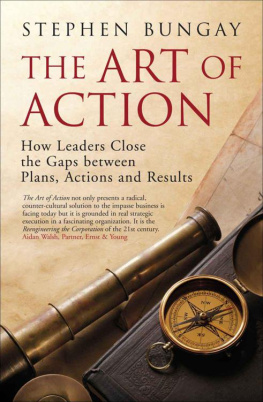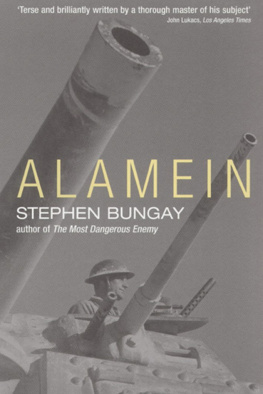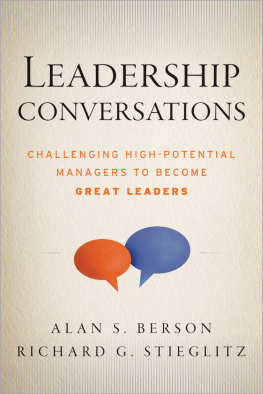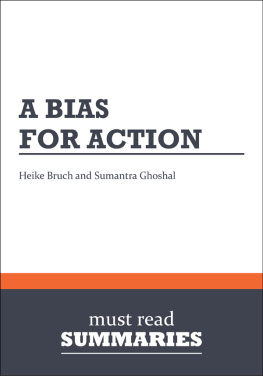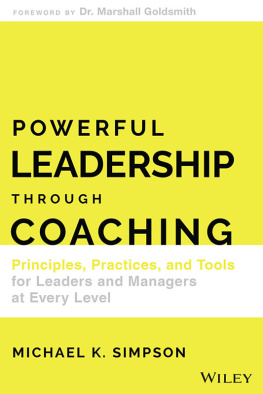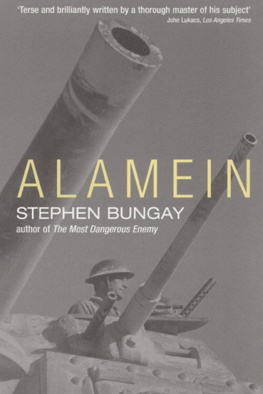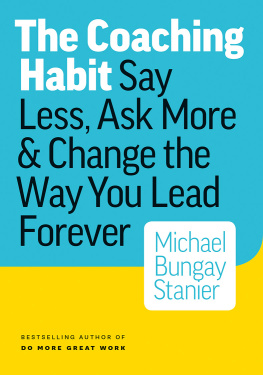Praise for
THE ART OF ACTION
This is not just another book about strategy. The Art of Action does not only present a radical, counter-cultural solution to the impasse business is facing today but it is grounded in real strategic execution in a fascinating organisation. It is the Reengineering the Corporation of the 21st century. I intend to send a copy to all my clients.
Aidan Walsh, Partner, Ernst & Young
Leadership is an intangible value. What sets Stephen Bungay apart is that he draws upon his deep knowledge of historical military campaigns to highlight key leadership principles and then sets them in the context of modern business with an understanding of the particular challenges faced by each company he works for. The first part greatly entertains and captivates the audience and the second part really brings home the teachings we wish to impart. The results have been very good.
Tom Glocer, CEO, Thomson Reuters
Organizational alignment remains one of the biggest challenges for leaders of large corporations. Many have fine strategies but the troops wont march in tune. Stephen Bungay delves into military history to provide a stimulating insight into how to arm leaders with a powerful concept which gets strategy off the PowerPoint presentation and into action. It is a simple, but profound and entertaining read.
Patrick Forth, Senior Vice President,
The Boston Consulting Group
We live in an age of strategic failure across the board in international relations and economic affairs, on the battlefield as well as in the marketplace. Inventively and incisively, Stephen Bungay draws on Clausewitzs wisdom, military history, business literature, and common sense to develop the notion of directed opportunism for breaking the ominous cycle of frustration.
Jonathan Stevenson, Professor of Strategic Studies,
U.S. Naval War College
The Art of Action is a must for anyone in business who takes their leadership responsibilities seriously. Stephen Bungay draws upon his deep understanding of business strategy and military history and describes principles in his book that will have a real impact for those who adopt them. The Art of Action is the strategic handbook for today built on the insights of yesterday. This will be compulsory reading for all of my unit heads.
Eliot Forster, CEO, Solace Pharmaceuticals
All too often, strategies fail to be implemented because they do not make tough choices between priorities and therefore leave people confused. The eminently pragmatic techniques described in this book are a great way of sharpening up the thinking, the communication and the sense of accountability needed to get an organisation moving. The ideas sound simple, but they are very powerful.
Martin Bean, Vice Chancellor, The Open University
Stephen Bungays career as CEO, management consultant and historian enables him to bring a unique clarity to leadership and the art of making strategy happen. His study of the chastened Prussian military machine analysing why it was defeated by Napoleons peasant army is illuminated with anecdotes from his career in business. It is this blend of evidence from the military to the business environment which makes this book so useful to the modern-day practitioner!
David Roblin, Senior Vice President, Pfizer Global R&D
In our experience senior executives in large corporations find the approach described in this book to be a tremendously helpful way of getting to the core of issues, setting direction and aligning the organisation behind it. The techniques may have been developed 150 years ago, but they could not be more relevant to business today.
Poul Bukh, Managing Partner, Core Strategy
THE ART OF ACTION
The Prussian General Staff, under the elder von Moltke did not expect a plan of operations to survive beyond the first contact with the enemy. They set only the broadest of objectives and emphasized seizing unforeseen opportunities as they arose Strategy was not a lengthy action plan. It was the evolution of a central idea through continually changing circumstances.
Jack Welch, 1981
Strategy is a system of expedients. It is more than science, it is the application of knowledge to practical life, the evolution of an original guiding idea under constantly changing circumstances, the art of taking action under the pressure of the most difficult conditions.
Helmuth von Moltke, 1871
THE ART OF ACTION
How Leaders Close the Gaps
between
Plans, Actions and Results
STEPHEN BUNGAY

For Tracy and Joe
all of them everywhere
First published by
Nicholas Brealey Publishing in 2011
35 Spafield Street | 20 Park Plaza, Suite 1115A |
Clerkenwell, London | Boston |
EC1R 4QB, UK | MA 02116, USA |
Tel: +44 (0)20 7239 0360 | Tel: (888) BREALEY |
Fax: +44 (0)20 7239 0370 | Fax: (617) 523 3708 |
www.nicholasbrealey.com
www.stephenbungay.com
Stephen Bungay 2011
The right of Stephen Bungay to be identified as the author of this work has been asserted in accordance with the Copyright, Designs and Patents Act 1988.
Library of Congress Cataloging-in-Publication Data
Bungay, Stephen.
The art of action : how leaders close the gaps between plans, actions, and results / Stephen Bungay. -- 1st ed.
p. cm.
Includes bibliographical references and index.
ISBN 978-1-85788-559-0
1. Leadership. 2. Strategic planning. I. Title.
HD57.7.B85 2011
658.4092--dc22
2010034900
ISBN 978-1-85788-559-0
British Library Cataloguing in Publication Data
A catalogue record for this book is available from the
British Library.
All rights reserved. No part of this publication may be reproduced, stored in a retrieval system, or transmitted, in any form or by any means, electronic, mechanical, photocopying, recording and/or otherwise without the prior written permission of the publishers. This book may not be lent, resold, hired out or otherwise disposed of by way of trade in any form, binding or cover other than that in which it is published, without the prior consent of the publishers.
Printed in Finland by WS Bookwell.
CONTENTS
PREFACE
Most lives have threads running through them. Some start in childhood, some in later life. Some break off and resurface later. Some are continuous. Sometimes, a few threads come together. This book is the result of some disparate threads in my life doing just that.
As a boy, I was fascinated by military history. It began with playing with soldiers and making models of tanks and aircraft. As a teenager, I became more interested in how they were handled, and played wargames. The fascination shifted from machines and soldiers to strategy and tactics.
Life had more apparently serious demands to make on me, and the pressure of exams pushed models and wargames into the background. I studied Modern Languages at Oxford and wrote a doctoral thesis about the German philosopher Hegel. I realized how little people in England really understand about German intellectual and cultural history. Germany was still seen as the old foe. If you go back beyond the twentieth century though, Germany was Englands old friend. I made my own friends there. Different as it was from my own motherland, Germany became a sort of intellectual fatherland for me.
Next page
